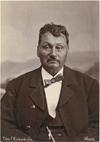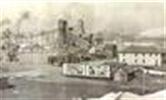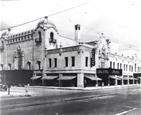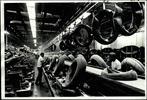History Of Miami

The town of Miami began with a dream, a partnership, and a Congressional act. Wayland C. Lykins, the son of a missionary to the Peoria Indians, came to the area to raise cattle in the 1890s. He had a dream of a cattle empire with his town, Miami, as the hub. Lykins went to Washington D.C. for congressional approval of a town site. It was only after Thomas F. Richardville, chief of the Miami Tribe and friend of Lykins, spoke to U.S. Indian Commissioner that the township patent was approved. The Ottawa Tribe sold 588 acres for the town, and the first lot was sold to Dr. W.I. McWilliams in June of 1891. Dr. McWilliams received the first deed to a white man in Indian Territory, and the town was named Miami, “My-Am-Uh”, after the Miami Indians.
Miami grew from a population of 300 that first year to around 2,500 by 1902. Many factors contributed to its growth. The rolling prairie was good pastureland for cattle, and the area was becoming widely known for its shipments of hay. The first train arrived in Miami on September 12, 1896, the Kansas City, Fort Scott and Memphis Railway Company, which connected Miami to Baxter Springs, Kansas. This line continued until 1900 when it was extended south to Afton to meet the Frisco mainline.

Lead and zinc were first discovered in the area in 1905. Mining operations were running by 1907 in the “Commerce field” and extended to the “Picher and Cardin fields” in 1915-1916. Miami became the gateway to these mining fields, therefore mining became a dominant part of Miami’s growth. The need for training of mining engineers resulted in the School of Mines opening in 1919. This school evolved into present day
Northeastern Oklahoma A&M College.
By 1909, Miami had 9 miles of cement walks, one 3-story brick hotel, three bakeries, three newspapers, a modern waterworks system, a modernly equipped fire department, electric lights, big ice plant, 13 churches, two railroads, three banks, planning mills, lumber yards, and splendid public schools. With the burst of mining the prairie town that Lykins envisioned was becoming a booming trade center.

A vaudeville theatre and movie palace
“Coleman Theatre Beautiful” opened to a full house of 1600 on April 18, 1929. Built by George L. Coleman, Sr., local mining magnate, the opulent structure with Spanish Mission Revival exterior and Louis XV interior design dazzled the audiences. From that day forward the Coleman has never been “dark”.
The Pensacola Dam was constructed from 1938-1940 across the Grand (or Neosho) River at the Grand River Valley. This dam provided both electricity to the area and jobs for many during the hard times of the Great Depression. The damming of the river created Grand Lake ‘O the Cherokees, providing recreational activities for people living in the area and visiting tourists.

Manufacturing, on a large scale, came to Miami in 1946, with the opening of B.F. Goodrich Miami Plant. Soon to follow were Blue Manufacturing Company opening in 1953 and U.S. Metal Container moving to Miami in 1955. Many manufacturers still call Miami home today.
Located in the northern part of town is a G.A.R. (Grand Army of the Republic) Cemetery, which includes Civil War era gravesites.
Historic Route 66 is still Main Street here in Miami, and many of the buildings in downtown are originals from the early 1900s.
Nine Native American tribes are located in or near Miami; Quapaw Tribe, Wyandotte Tribe, Modoc Tribe, Miami Tribe, Seneca-Cayuga Tribe, Ottawa Tribe, Eastern Shawnee Tribe, Peoria Tribe, and Shawnee Tribe.
The Dobson Museum, located near downtown, displays local Native American artifacts and has over 5,000 historical items.
Tourism has become a huge part of the community. Many Indian gaming facilities and the
Route 66 Vintage Iron Motorcycle Museum lure visitors to Miami. When spring rolls around, fisherman line the banks of the Neosho River hoping to snag a
spoonbill, sometimes call a paddlefish).
There is nothing better to me then a nice drive through the country to just unwind, rock out to your favorite tunes and just enjoy what the road has to show you. This series is more just a quick PnG with a few twists, to enjoy the country and boost your find scores up just a bit.
Along the way I encourage you to check out the random caches and power trails that others have hidden. (also another reason why I made this series). This route will take you through several small towns with a lot of history, take time to enjoy some of the shops and parks that you may see, or just to take note of when you really want to go on a weekend adventure.
Most importantly have fun. This series isn't meant to be anything other than a nice country drive.
I have made a Country Wild List for you to access easily to complete the whole series.